Koreanspice Viburnum (Viburnum Carlesii) Profile
Written by Iris
Nov 02 2021
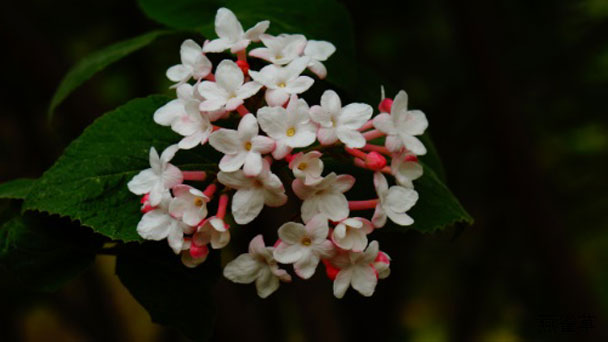
The most striking feature of Koreanspice Viburnum (Viburnum Carlesii) is the heady, fragrant white flowers that cover the shrubs in spring. The pink to red sprouted white flowers have a pink blush and the leaves are a dull dark green, turning a brilliant Burgundy in autumn. Viburnum carlesii is an excellent choice for specimens, bush edges and base plants.
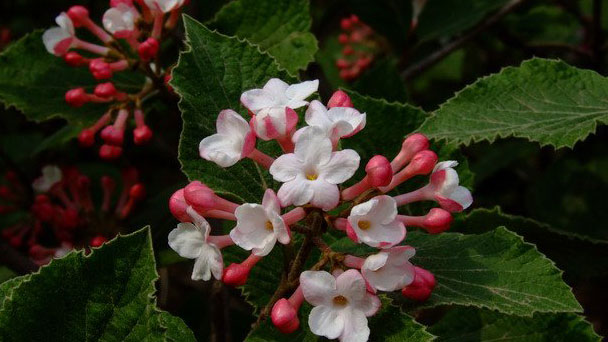
With this in mind, the viburnum carlesii will be most used to the heat zones in the 4 – 8 region, as the plant hardiness level falls between 4b, 4a, 5b, 5a, 6b, 6a, 7b, 7a and the ideal climate zone is between 2B, 3A, 3B, 4, 5, 6, 7, 8, 9, 10, 11, 14, 15, 16, 17, 18, 19, 20, 21, A3.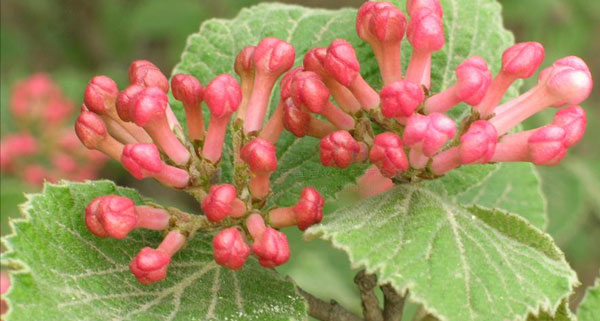
Take a cutting from the newest fresh growth around 4 inch (10cm) long, remove the lower leaves and take a fresh cut just below the node (where the leaves are). This is where the new roots should shoot, pinch the top out and dip in rooting powder to help promote root growth. Make a hole in the compost which should be 50% seed compost and 50% grit sand and insert the cutting. Tap the sides to settle the compost and water well. Ideally you want to place in a propagator with bottom heat. Softwood cuttings root quickly so it should not be too long before they are ready to pot on.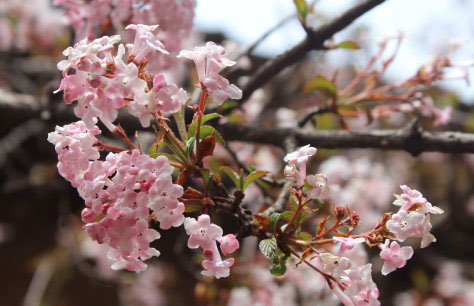
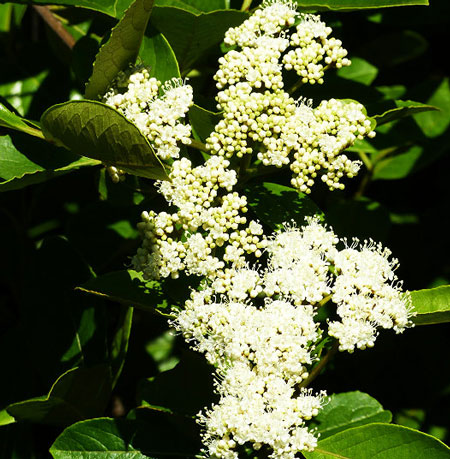
Korean spice Viburnum provides any landscape with a sweet, spicy fragrance in the spring. It is a treat in the early spring to remind you of the joys of spring and summer. It is also a beautiful shrub that provides privacy to a lawn and due to the size, it can provide some protection within a larger windbreak. So the next time you look for a shrub for a specimen plant or to place in a windbreak or other border, choose one that also provides beauty and interest, choose Korean spice Viburnum.
Koreanspice Viburnum'Aurora' is a slower-growing rounded shrub that generally stays around 4 to 5 feet in height.
Koreanspice Viburnum‘Compactum’ is a smaller variety of korean spice viburnum that grows 2 1/2 to 4 feet tall and wide with flowers colored the same as the pure species, white.
Koreanspice Viburnum'Spice Bouquet' is a 4 to 6-foot shrub with soft pink flowers that fade to white.
Koreanspice Viburnum'Spice Island' is 3 to 5 feet tall with white flowers, and dark green leaves with good red fall color.
Koreanspice Viburnum 'Sugar N' Spice' is 4 to 5 feet high with dark green leaves that turn maroon-red in fall.
Viburnum × carlcephalum is a cross between V. carlesii and V. macrocephalum var. keteleeri. It has large snow-ball-like flowers, and is hardy in zones 6 to 8. It grows 6 to 10 feet tall.
Viburnum x burkwoodii (Burkwood vibernum) is a cross between V. utile and V. carlesii. It is a broad, dense shrub reaching 8 to 10 feet, with flat-topped white flowers blooming in April.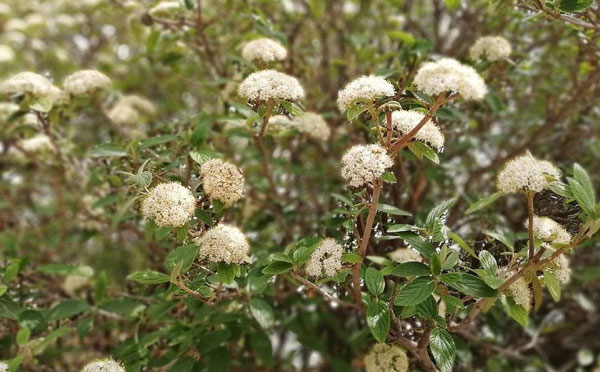
Suitable for a woodland garden or mixed border.
Create a year-round focal point with the changing colors and blooms.
Plant a row of upright varieties to create an impressive hedge.
Use dwarf or more compact types, like dwarf cranberry bush, for container plantings.
Koreanspice Viburnum PictureKoreanspice Viburnum InfoKoreanspice Viburnum Ecological HabitsKoreanspice Viburnum DistributionHow to Grow and Care for Koreanspice ViburnumHow to Grow Koreanspice ViburnumHow to Care for Koreanspice ViburnumUses of Koreanspice ViburnumVarieties of Koreanspice ViburnumKoreanspice Viburnum Common Pests/DiseasesKoreanspice Viburnum Design TipsKoreanspice Viburnum Companion Plants
Koreanspice Viburnum Picture

Koreanspice Viburnum Info
| Botanical Name | Viburnum carlesii |
| Common Name | Korean spicebush |
| Plant Type | Deciduous flowering shrub |
| Mature Size | 6 feet tall and wide |
| Sun Exposure | Full sun to part shade |
| Soil Type | Moist, well-drained |
| Soil pH | 5.6 to 6.6 (acidic to neutral) |
| Bloom Time | Spring |
Koreanspice Viburnum Ecological Habits
Koreanspice Viburnum (Viburnum carlesii) is hardy in U.S. Department of Agriculture horticultural zones 5 through 9. Depending on the cultivar, this moderate grower can reach from 4 to 6 feet high and 4 to 6 feet wide. In spring, it produces large clusters of pink or white flowers that exude a spicy, clovelike fragrance. Like many other viburnums, the flowers transform into showy red fruits that attract birds, making this shrub useful for planting in a wildlife garden. Apart from the vivid red berries, koreanspice viburnum continues to put on a show in autumn, when its foliage turns to shades of red and orange.Koreanspice Viburnum Distribution
Knowing your plant's native region is very useful, as it can give you tips on which environment is best for your Korean Spice Viburnum. If you keep it in mind, you can try to replicate these conditions at home, and you’ll likely end with a healthier plant.With this in mind, the viburnum carlesii will be most used to the heat zones in the 4 – 8 region, as the plant hardiness level falls between 4b, 4a, 5b, 5a, 6b, 6a, 7b, 7a and the ideal climate zone is between 2B, 3A, 3B, 4, 5, 6, 7, 8, 9, 10, 11, 14, 15, 16, 17, 18, 19, 20, 21, A3.

How to Grow and Care for Koreanspice Viburnum
How to Grow Koreanspice Viburnum
Softwood cuttings will give you the best success rate when trying to propagate Viburnum carlesii and cuttings are taken in spring from the new growth. Cuttings will root quickly and be ready for potting on into larger pots in mid-summer, if not over-winter until the following season.Take a cutting from the newest fresh growth around 4 inch (10cm) long, remove the lower leaves and take a fresh cut just below the node (where the leaves are). This is where the new roots should shoot, pinch the top out and dip in rooting powder to help promote root growth. Make a hole in the compost which should be 50% seed compost and 50% grit sand and insert the cutting. Tap the sides to settle the compost and water well. Ideally you want to place in a propagator with bottom heat. Softwood cuttings root quickly so it should not be too long before they are ready to pot on.

How to Care for Koreanspice Viburnum
- Light
- Soil
- Water
- Temperature and Humidity
- Fertilizer
- Pruning

Uses of Koreanspice Viburnum
Viburnum shrubs are attractive to pollinators including bees and butterflies. So they can be an asset to your landscape for that reason.Korean spice Viburnum provides any landscape with a sweet, spicy fragrance in the spring. It is a treat in the early spring to remind you of the joys of spring and summer. It is also a beautiful shrub that provides privacy to a lawn and due to the size, it can provide some protection within a larger windbreak. So the next time you look for a shrub for a specimen plant or to place in a windbreak or other border, choose one that also provides beauty and interest, choose Korean spice Viburnum.
Varieties of Koreanspice Viburnum
Several varieties of Korean spice viburnum are available, some of which are cultivars, others that are crosses between V.carlesiii and other species:Koreanspice Viburnum'Aurora' is a slower-growing rounded shrub that generally stays around 4 to 5 feet in height.
Koreanspice Viburnum‘Compactum’ is a smaller variety of korean spice viburnum that grows 2 1/2 to 4 feet tall and wide with flowers colored the same as the pure species, white.
Koreanspice Viburnum'Spice Bouquet' is a 4 to 6-foot shrub with soft pink flowers that fade to white.
Koreanspice Viburnum'Spice Island' is 3 to 5 feet tall with white flowers, and dark green leaves with good red fall color.
Koreanspice Viburnum 'Sugar N' Spice' is 4 to 5 feet high with dark green leaves that turn maroon-red in fall.
Viburnum × carlcephalum is a cross between V. carlesii and V. macrocephalum var. keteleeri. It has large snow-ball-like flowers, and is hardy in zones 6 to 8. It grows 6 to 10 feet tall.
Viburnum x burkwoodii (Burkwood vibernum) is a cross between V. utile and V. carlesii. It is a broad, dense shrub reaching 8 to 10 feet, with flat-topped white flowers blooming in April.
Koreanspice Viburnum Common Pests/Diseases
One problem you may encounter when taking care of this plant is the curly leaves at the tips of the branches. The most likely culprit is aphids. If you manage to catch them at the event, spray them with organic neem oil. But the aphids come and go quickly, leaving behind a damaged leaf. Fortunately, leaf rolling doesn't cause long-term damage if it's limited to a small part of the entire plant. It is problematic only on an aesthetic level, ruining the appearance of the leaves in summer and fall. Prune the tips of the affected branches and dispose of them properly, and the plant will not be worse off as a result.
Koreanspice Viburnum Design Tips
With all the variation and seasonal interest that viburnums bring to the garden, the uses are nearly endless.Suitable for a woodland garden or mixed border.
Create a year-round focal point with the changing colors and blooms.
Plant a row of upright varieties to create an impressive hedge.
Use dwarf or more compact types, like dwarf cranberry bush, for container plantings.
Koreanspice Viburnum Companion Plants
Choose Koreanspice Viburnum companion plants with contrasting foliage, such as evergreen ferns. (Or, for a winter garden, pair with other early bloomers like crocuses and pansies.) Because viburnum doesn't self-pollinate regularly, plant several viburnum shrubs near each other.Latest Updated
- Benefits of Bugleweed - 7 Science-backed Health Benefits
- Bugleweed Dangers & Side Effects - Is It Poisonous?
- How to Plant Evergreen Trees - What You Should Know
- When to Plant Evergreens - Grow Guide for Evergreen Trees
- 12 Wonderful Evergreen Shrubs for Your Garden
- 12 Popular Evergreen Plants with Pictures for Beginners
- When And How To Prune A Lilac Bush Like a Pro
- How to Grow & Care for Lilac Vine (Hardenbergia Violacea)
- Japanese Lilac Tree (Syringa Reticulata) Care & Propagation Guide
- Shumard Oak Pros and Cons - What to Know
Popular Articles
- Winter maintenance of Antirrhinum Majus
- How to Grow Terminalia Mantaly Tree
- How to Grow and Care for Crossostephium Chinense
- How to grow Antirrhinum Majus in spring
- Peristeria Elata (Dove Orchid) Profile: Info & Care Guide
- Underwatered Snake Plant (Sansevieria Trifasciata) - Signs And How To Fix
- How to Care for Brazilian Jasmine Plant (Mandevilla Sanderi)
- How to Grow & Care for Graptopetalum Purple Delight in Summer
- Rosa Chinensis (China Rose): Plant Growing & Care Tips
- How to Care for Baby Sun Rose (Aptenia Cordifolia)